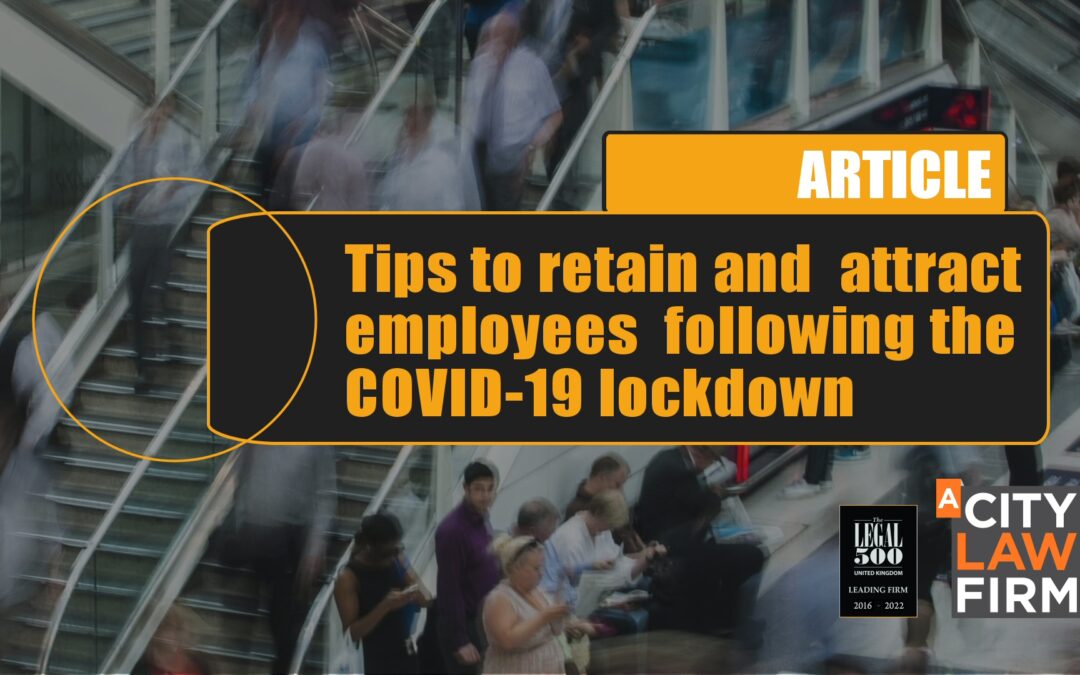The pandemic seems to have redefined major work trends with an increase demand in certain sectors and a competitive job market. It is imperative that business leaders evaluate the impact these trends have on their organisation’s operations and strategic goals, and assess to what degree these HR trends change pre-COVID-19 strategic goals and plans. Policies ; staff handbooks ; working practices and contracts as a result may need to be reviewed as well as technology integration.
To attract and retain top talent careful consideration is needed regarding training, career progression and staff well-being. In collaboration with HR, business leaders should consider the trends and potential workplace changes resulting from coronavirus pandemic.
1. Increase in hybrid/remote
Many companies have shifted to a hybrid model of office based and remote working and some have moved exclusively to remote working operations.
Many workers during the pandemic have grown accustomed to the increased flexibility that this way of working brings. Many staff have also reassessed their priorities and for some junior staff they may have known nothing other than working during a pandemic where the Government actively encouraged worker to work from home. That said employers should not assume this is a magic pill or that all staff want this. Just as there are many staff who like this way of working, many others have expressed difficulties working remotely; experienced
What has become front and centre is staff well being and wellness which are key issue and we expect to be a firm focus for all employers looking to recruit and retain top talent.
Transparency as to how hybrid models will be adopted is likely to be key in attracting and retaining top tier candidates, aswell as considering the pitfalls or concerns , engaging with your employees and discussing working models is also encouraged
2. Expanded employer role as a social safety net
As above the pandemic, and the shift to greater degree of remote working has led to an increase in conversations around physical and mental well-being. Again policies may need to be revisited, but also possibly insurance policies and benefits. Boundaries have been pushed in respect of how employees view the employment experience. Personal wellbeing has taken precedence for them and for employers to protect themselves in terms of regular check in; safety of staff equipment & homeworking, Covid isolation strategies; overworked staff due to maybe Covid or restructures.
Greater emphasis has been placed on the employer’s responsibility for employee wellbeing and to act as a social safety net & consider all of the above. Going forward, support could include enhanced sick leave, financial assistance, adjusted hours of operation and childcare provisions.
3. Maximize your reputation as an employer
Prior to the pandemic, many leading organisations were already facing increased employee demands for transparency, both in terms of cultural objectives, company policies and how workplace wellbeing would be catered for.
This has led to an increased expectation from prospective candidates and current employees, and organisations may be judged by their level of transparency and how these values are communicated. Coupled with gender pay reporting and other reporting structures employers need to consider including issues on climate change and environmental issues.
Many employers have also recognised the investment in technology to help their employees carry out tasks and make their lives a bit easier. We have seen a focus on many employers emphasising their technology when recruiting staff. Those coming out of education in particular have a clear expectation on the use and integration of technology.
4. Speed Up Hiring Process
Speed up the hiring process by making the shift to a more remote interviewing, virtual job fairs, and tech-enabled job recruitment.
Use of technology like Zoom to ease communication with candidates, will be appealing as top talent that expect to be snapped up quickly. Lengthy interviewing processes may dissuade prospective candidates from applying or continuing through the application process. It is however still important that proper processes are considered and followed. .
5. Use online
The pandemic has seen a shift in focus in attracting top talent online. This could be through social media channels, LinkedIn or online job fairs.
In order to find top talent, businesses need to tap into personal and professional relationships, and network on the local, regional, and national level. Effective recruitment efforts will maximise the chance to get in front of the most talented potential employees.
6. Look at benefits
Staffing can be expensive so companies could consider alternative options to attract and retain staff
1. Staff options grants employees the right to shares in the business. Structures like the EMI scheme are a tax effective way of affording shares in the company to staff. This encourages people to stay and feel engaged by the company as they are a fundamental part of it.
2 Additional annual leave over and above market standard could be more attractive that an salary for new starters
3. Private health care is something more and more employees welcome and it’s harder to leave a role with this benefit available right now so it’s an incentive and deterrent to leave
Conclusion
What is clear is that the pandemic forced a change in hiring and working practices. How long this continues or the longer impact of the same remains to be seen but for now combined with a competitive job market, to attract and retain talent businesses are being innovative

